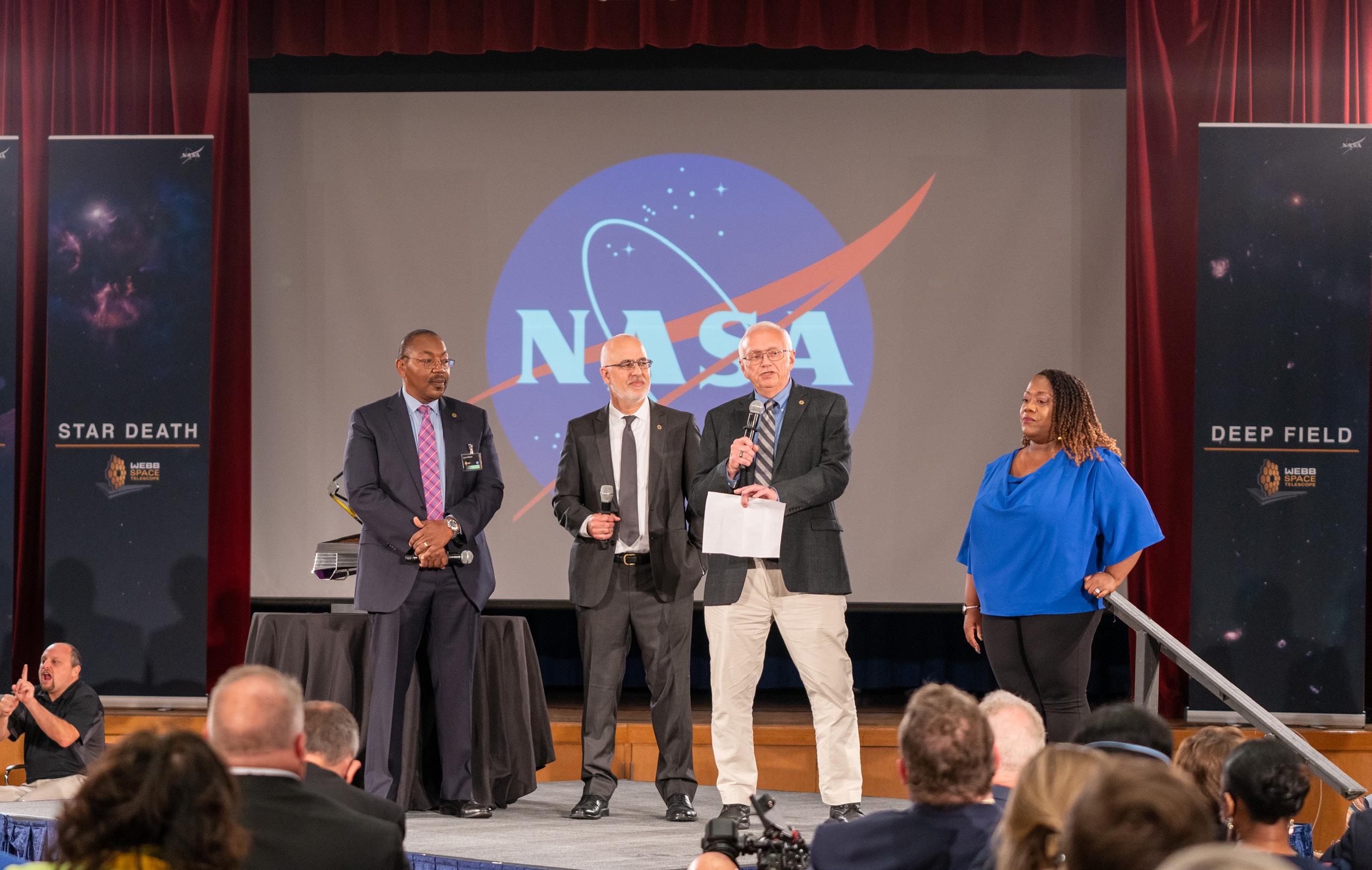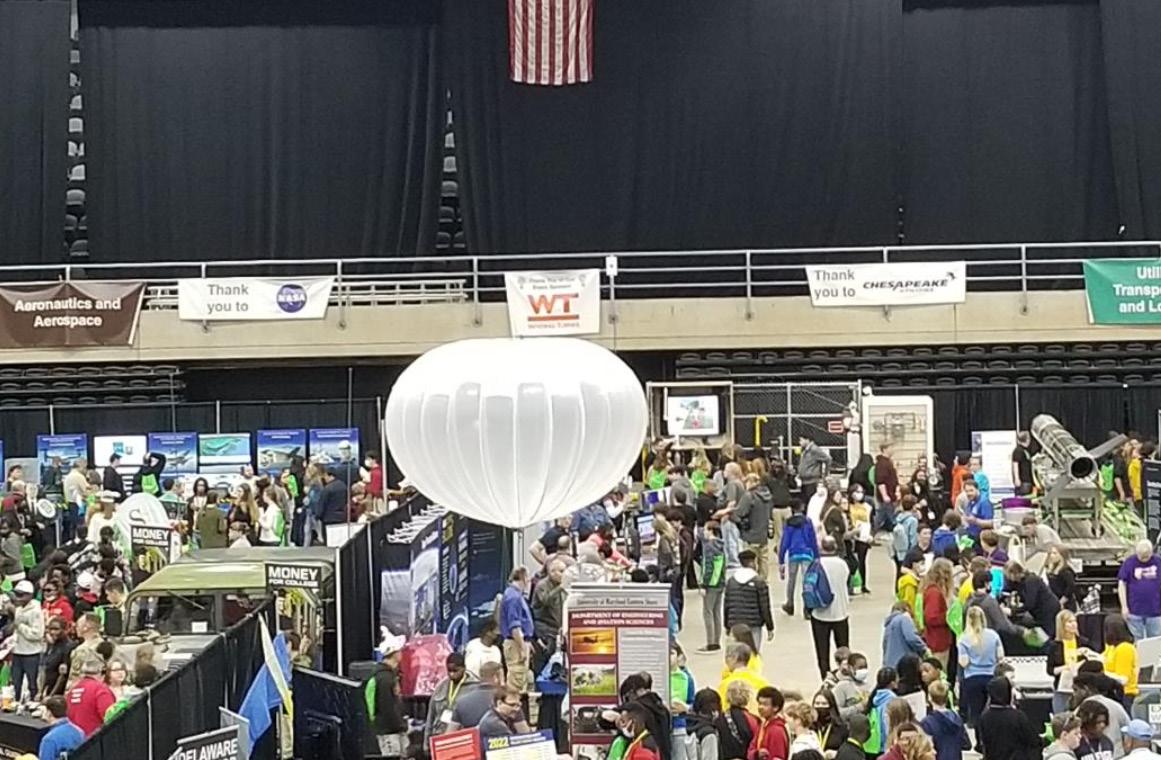
3 minute read
THIS IS ENGINEERING AND TECHNOLOGY
ENGINEERING AND TECHNOLOGY
ENGINEERING AND TECHNOLOGY ARE THE ENGINES THAT DRIVE GODDARD
The Goddard Engineering and Technology Directorate provides integrated, multidisciplinary engineering expertise for the development of cutting-edge science and exploration systems and technologies.
NASA’s leaders in several technical capability areas:
• Science Instrumentation • Systems Engineering and Flight Dynamics • Communication • Navigation • Avionics and Software • EEE Parts and Radiation • Satellite Servicing • Large Space Telescopes • Artificial Intelligence and Machine Learning • Balloons and Sounding Rockets
OUR FOCUS AREAS
Full Life-Cycle Flight Instrument Development
This includes integrated engineering expertise in the areas of optics, cryogenics and fluids, detector systems, lasers and electro-optics, and microwave instruments in support of science missions, spacecraft development, and in situ and remote sensing instruments from advanced concepts through implementation.
Sensor Systems and Instrument Platforms
Goddard builds instruments for missions, ranging from subsystems – such as detectors and optical elements – to full instruments and complex instrument suites. The center’s sensor and detector development covers the entire electromagnetic spectrum, gravitational waves, and particle detection. Goddard also leads in developing optical systems and laser development for next-generation decadal missions and has an unprecedented capability in demonstrating picometer stability under varying thermal conditions.
Large-scale Scientific Information Systems, Data Processing, Integration, and Dissemination
Goddard designs, implements, and integrates custom, large-scale data systems and supercomputing applications for high-performance computing and archiving of a wide range of science data.
In-space Servicing, Assembly, and Manufacturing
Goddard services enable extended mission operations, reconfiguration, and recovery, including in-orbit spacecraft refueling and repair, assembling large structures in orbit, and enabling modular designs.
Technology Innovation, Design, and Maturation to Enable Future Exploration
Goddard is a leader in developing, implementing, and maturing technology programs, collaborating closely with the science community and other customers to identify new and emerging technology requirements.
Digital Engineering
Goddard is at the fore in digital engineering transformation, a multidisciplinary effort to incorporate digital tools to increase efficiency, integration, and interoperability for quicker iterative engineering, design validation, and hardware build verification. This innovative approach minimizes the inefficiencies of human-in-the-loop processes, fixes project issues early in the engineering life cycle, and reduces product delivery time.

PROGRAM HIGHLIGHTS
Quantum Technology Development
Incorporating quantum sensing and atom interferometry into science instruments will improve science measurements across multiple lines of business. Notably, Goddard’s Atom Interferometer Gravity Gradiometer offers direct, real-time measurements of Earth’s gravitational field and changes over time, which is critical to understanding climate change. Quantum communications has even broader impacts across all areas and lines of business.
SWARM
SWARM is a new avionics technology that gives scientists a neverbefore-offered capability in sounding rocket-based research. With SWARM technology, sounding rockets deploy multiple soda can-sized subpayloads to varying altitudes where their onboard miniaturized instruments gather multipoint measurements. A SWARM radio receiver located on the main (mother) payload gathers the subpayloads’ data and multiplexes them into one data stream that it transmits to ground stations below.
SAINT
Goddard’s Search and Rescue Intelligent Terminal (SAINT) is an innovative technology directly supporting NASA’s Artemis program. It provides capsule location and astronaut beacon location to on-scene rescue forces and is a revolutionary step in data dissemination for search and rescue purposes. In the event of an emergency during launch or landing, SAINT will be used to provide critical insight to the mission control center at NASA’s Johnson Space Center in Houston and the NASA recovery director aboard the USS Portland.













